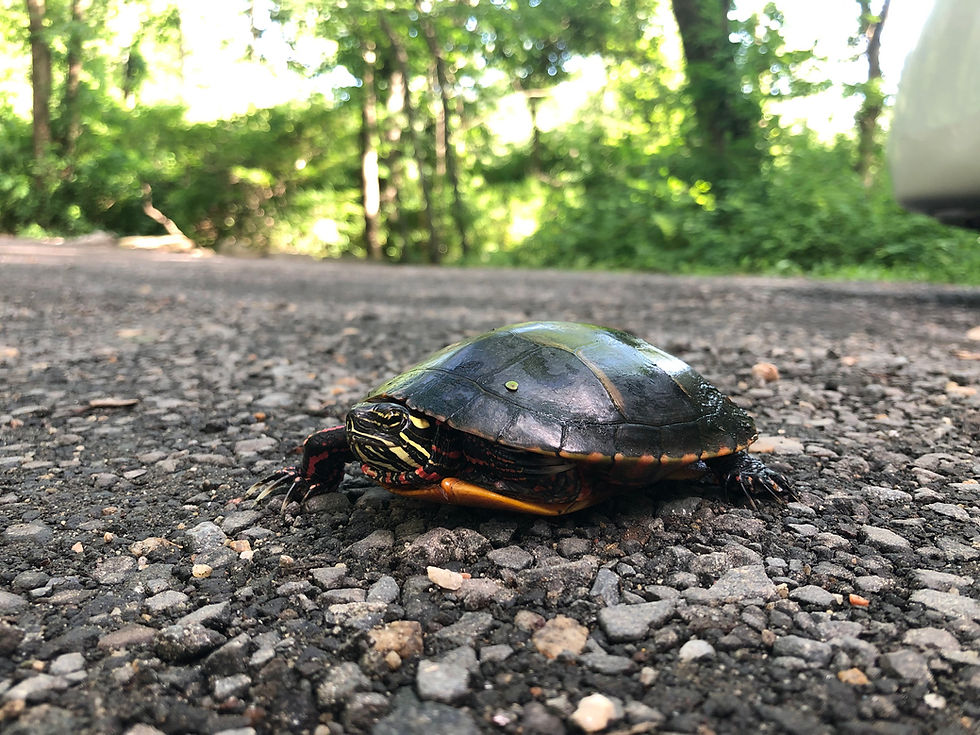Beyond Our Gaze: The Lives of Bobcats

By Tommy McCarthy, Environmental Educator
Whether or not you spend a lot of time exploring nature, Bobcat sightings always feel special. On top of the fact that they are primarily active at dawn and dusk, these elusive and secretive wild cats are masters of stealth and camouflage. Though sightings are on the rise, they are still fairly rare, and usually not prolonged. I have been fortunate enough to see them a few times in Connecticut, and once even saw a mother with kits passing through a field after getting out of my car for an early morning hike. But we do not often get chances to observe their behavior for more than a few moments - leaving much of their lives a mystery. Sightings of seldom observed animals often leave me in a very thoughtful, appreciative and curious mood. One was recently spotted on Woodcock property by a staff member, and it left me wondering what these cats are up to as we head further into winter.
One detail about Bobcats that seems illustrative of their lifestyle is the degree to which they roam. Territories can be anywhere from 8 to 20 square miles in size, and daily movements of up to 4 miles are common. This alone paints a much clearer picture of their lives - words like wandering and nomadic come to my mind as I imagine a solitary cat journeying through different habitats on a regular basis. They even keep several dens throughout their territorial range, and so may not always return to the same place to sleep. These dens can have a variety of characteristics - think densely vegetated areas, hollow logs, roots of fallen trees, and natural rock shelters. They tend to similarly stick to areas with thick cover for traveling and hunting, usually preying upon animals that prefer to do the same. Rabbits make up a large part of their diet, but woodchucks, squirrels, chipmunks, mice, and birds are also on the menu. Rather than chasing their prey down bobcats are known to patiently stalk and pounce upon their prey.
Bobcats actively travel and hunt like this all through the winter - they even grow a lighter winter coat that helps them to camouflage in their gray, white, and brown surroundings. As winter continues however, they do make changes to their solitary lifestyle in order to seek out a mate. Sightings become more likely as males wander further outside their territories in search of females. Females begin leaving their scent behind for males to find them, either by rubbing their bodies on scent posts or urinating. When a male bobcat finds a female, mating may occur several times after a brief period of courtship in which the cats engage in playful behavior - though the female may instead aggressively chase the male off if she is not receptive. Once completed, the two part ways, and the female is left to independently give birth to and raise her kittens. Bobcats do not form monogamous bonds, and males will continue to wander in search of more mating opportunities. After successful mating, the female primarily occupies what is called a “natal den”, where her initially helpless young will be the safest as she nurses, hunts for, and cares for them. Most kittens are born around the beginning of spring, and the female will raise them for around 9 months. She will travel with them during this period once they are strong enough to join her, leading by example and teaching them the skills they will need once they part ways and become solitary.
Words can only do so much to describe what truly goes on in the lives of these beautiful animals, and I think that’s why sightings tend to feel so mystical. Most moments of their lives go unwitnessed - wandering, hunting, resting, mating, and raising young. Just a handful of terms to describe behaviors that are so much more complex and nuanced in reality. As someone who has spent a decent amount of time seeking out opportunities to observe wildlife, I firmly believe that knowing a species requires a lot of first hand observation. Reading facts can give a glimpse into their lives and allow speculation, but time spent watching an animal in a non-invasive way has no substitute when it comes to gaining familiarity with a species and learning about them as individual beings. The secretive nature of Bobcats’ lifestyle makes this an impossibility without honed tracking skills and technology like camera traps - and we should respect that. Bobcats were once nearly hunted to the point of extirpation in Connecticut, and the state even had a bounty on them as a threat to agriculture and game species. In 1972, Connecticut classified them as a protected species and placed a ban on hunting them. That, in combination with protection of habitat, has allowed their population here to recover - and so they continue to mystify, enchant, and inspire curiosity in us during the brief moments we may have to observe them.
Citations:
Wildlife Sighting Public Viewer (arcgis.com)
Connecticut’s Bobcat Population Flourishing – NBC Connecticut
Learn about bobcats | Mass.gov
The Life Of Bobcat: Are Bobcats Nocturnal, Diurnal or Crepuscular? (wildlyanimals.com)
Bobcat Mating Season: When Do They Breed? - A-Z Animals (a-z-animals.com)
Read more Notes From A Naturalist...





